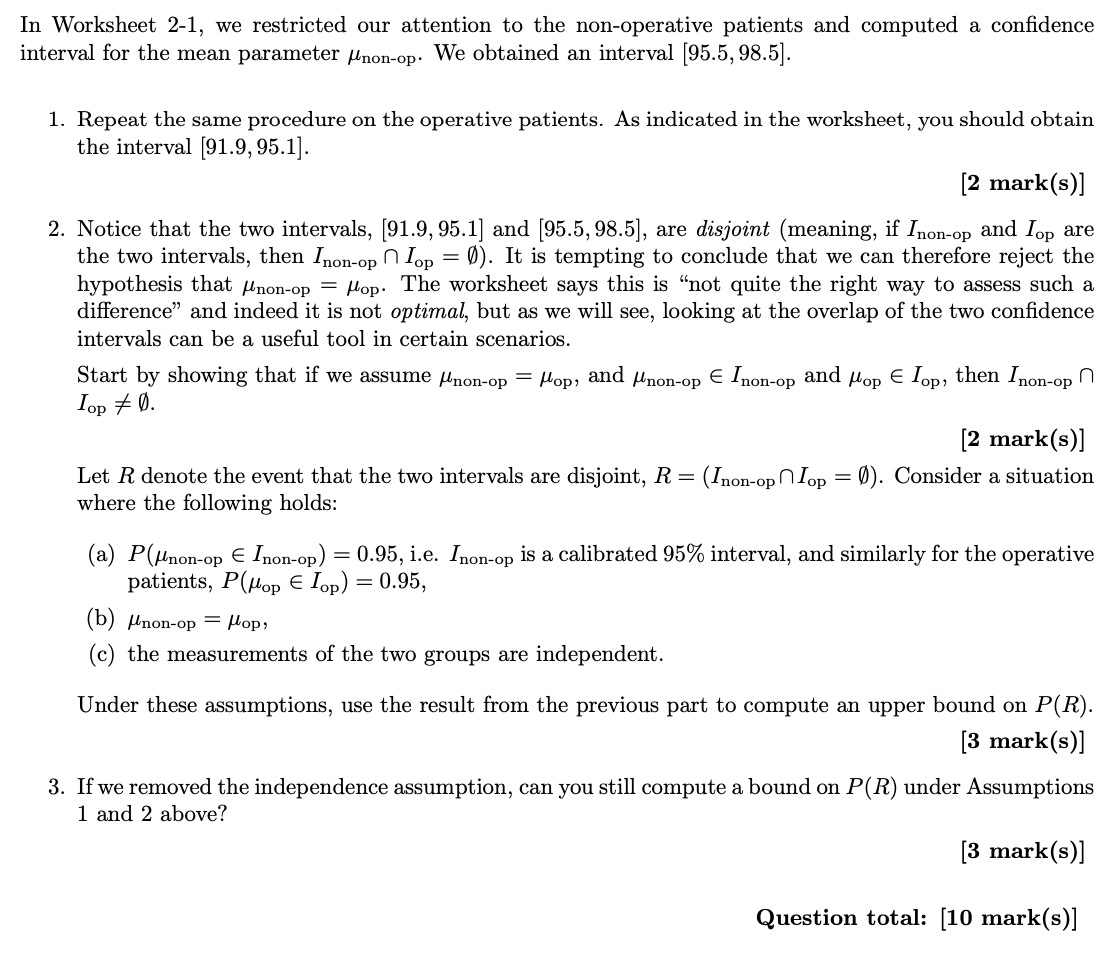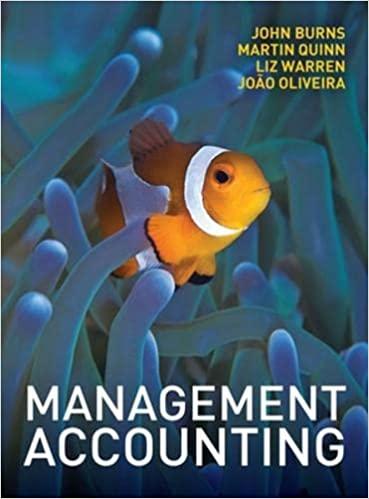
In Worksheet 2-1, we restricted our attention to the non-operative patients and computed a confidence interval for the mean parameter Mnon-op. We obtained an interval [95.5, 98.5]. 1. Repeat the same procedure on the operative patients. As indicated in the worksheet, you should obtain the interval (91.9,95.1]. [2 mark(s)] 2. Notice that the two intervals, [91.9, 95.1) and (95.5, 98.5), are disjoint (meaning, if Inon-op and lop are the two intervals, then Inon-op n lop = %). It is tempting to conclude that we can therefore reject the hypothesis that ll non-op = Mop. The worksheet says this is not quite the right way to assess such a difference and indeed it is not optimal, but as we will see, looking at the overlap of the two confidence intervals can be a useful tool in certain scenarios. Start by showing that if we assume non-op = Mop, and Unon-op e Inon-op and Hop E lop, then I non-op n Top +0. [2 mark(s)] Let R denote the event that the two intervals are disjoint, R= (Inon-op n lop = %). Consider a situation where the following holds: (a) P(unon-op Inon-op) = 0.95, i.e. Inon-op is a calibrated 95% interval, and similarly for the operative patients, P(Hop E lop) = 0.95, (b) Mnon-op = Mop, (c) the measurements of the two groups are independent. Under these assumptions, use the result from the previous part to compute an upper bound on P(R). [3 mark(s)] 3. If we removed the independence assumption, can you still compute a bound on P(R) under Assumptions 1 and 2 above? [3 mark(s)] Question total: (10 mark(s)] In Worksheet 2-1, we restricted our attention to the non-operative patients and computed a confidence interval for the mean parameter Mnon-op. We obtained an interval [95.5, 98.5]. 1. Repeat the same procedure on the operative patients. As indicated in the worksheet, you should obtain the interval (91.9,95.1]. [2 mark(s)] 2. Notice that the two intervals, [91.9, 95.1) and (95.5, 98.5), are disjoint (meaning, if Inon-op and lop are the two intervals, then Inon-op n lop = %). It is tempting to conclude that we can therefore reject the hypothesis that ll non-op = Mop. The worksheet says this is not quite the right way to assess such a difference and indeed it is not optimal, but as we will see, looking at the overlap of the two confidence intervals can be a useful tool in certain scenarios. Start by showing that if we assume non-op = Mop, and Unon-op e Inon-op and Hop E lop, then I non-op n Top +0. [2 mark(s)] Let R denote the event that the two intervals are disjoint, R= (Inon-op n lop = %). Consider a situation where the following holds: (a) P(unon-op Inon-op) = 0.95, i.e. Inon-op is a calibrated 95% interval, and similarly for the operative patients, P(Hop E lop) = 0.95, (b) Mnon-op = Mop, (c) the measurements of the two groups are independent. Under these assumptions, use the result from the previous part to compute an upper bound on P(R). [3 mark(s)] 3. If we removed the independence assumption, can you still compute a bound on P(R) under Assumptions 1 and 2 above? [3 mark(s)] Question total: (10 mark(s)]







